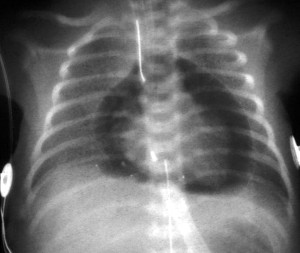NG tubes. Yes, they’re pretty gross. Anything going in or coming out of the nose is gross, have you seen the stuff that comes out when an NGT is put to suction? I’m talking rainbow secretions! All joking aside, if you think they are gross, just imagine how the patient feels. I put a NG tube in the other day and was struggling to get it around the sinuses, it isn’t a straight route y’know.

So advice for NG insertion:
- Explain EVERYTHING to the patient! Tell them it will be uncomfortable. Tell them you will be there for them. Tell them that it is crucial to swallow. Tell them you are going to try to do the procedure as quick as possible. REASSURANCE is key!
- Pre-medicate if necessary. This is controversial. My patient the other day got morphine sulfate IV before the procedure, this totally helped in chilling out her gag-reflex and made the process easier BUT, if your patient is prone to becoming sedated or unable to follow commands then lay off the meds – use your judgement.
- Measure correctly. Remember that it is nose to ear to xyphoid process – mark it with tape.
- Lube, lube and more lube! We need that tube to slide and it has a long way to go, so be liberal with that lube!
- Encourage your patient to sip water. The swallowing effect with assist you in moving the tube down the esophagus.
- Don’t give up in getting it down! There may be issues along the way so troubleshoot fast. If you cannot get it pass the sinuses, twist and manipulate the directing you are inserting the tube. Have the patient open their mouth to check for coiling in the back of the throat.
- Lastly, always check your placement. Use the piston to blow an air bubble in, listen at the xyphoid process with your stethoscope for the air bubble. Placement is also checked with a follow up CXR.
There are many reasons why an NG tube may be placed. There are reasons to suction, give meds, remove acid, or feeding – regardless they are not comfortable for the patient and careful consideration should be made for skin breakdown in the nares or insertion site.






 Pneumothorax: This is when air collects in the pleural space; can also be referred to as a “collapsed lung”. The air pressure in the pleural space does not allow the lung to reinflate.
Pneumothorax: This is when air collects in the pleural space; can also be referred to as a “collapsed lung”. The air pressure in the pleural space does not allow the lung to reinflate.
 Pleural Effusion: This is the accumulation of fluid in the pleural space. This can be caused by CHF, liver failure, kidney failure, peritoneal dialysis, pneumonia, lymphoma or breast cancer. Though most pleural effusions are caused by congestive heart failure, pneumonia, pulmonary embolism and malignancy.
Pleural Effusion: This is the accumulation of fluid in the pleural space. This can be caused by CHF, liver failure, kidney failure, peritoneal dialysis, pneumonia, lymphoma or breast cancer. Though most pleural effusions are caused by congestive heart failure, pneumonia, pulmonary embolism and malignancy.

